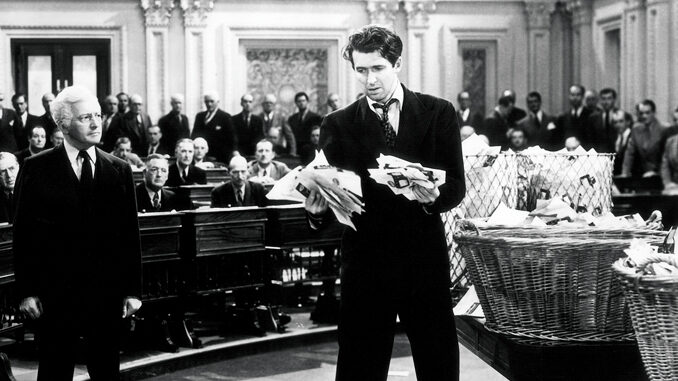
by Betsy A. McLane
As soon as the MAY-JUN 12 issue of CineMontage — featuring “The 75 Best Edited Films” as selected by Editors Guild members — arrived in mailboxes, readers’ comments immediately ensued: Why was (insert title of your favorite film here) not included? Did Rope actually make the list, or is that a joke? Was it really possible that Citizen Kane was not number one? But the overwhelming question, from a curious film scholar’s point of view: Why were there no films chosen from the 1930s — the only decade not represented from the 1920s to the 2010s?
Ironically, it was in the 1930s that the Society of Motion Picture Film Editors was founded. Was that decade a wasteland in terms of editing skills? The early ‘30s, after all, was the period when sound took hold in Hollywood and editors had to learn an entirely new set of skills. They were also the years when sound recording and sound editing really came into their own and began developing into an art, reaching a crescendo in (aha!) Citizen Kane in 1941.
With the arrival of sound, editors were faced with editing dialogue scenes without being able to hear the words spoken.
The omission was not simply a case of the 1930s films being too old; indeed, three titles from the silent era were included: Sherlock, Jr. (1924), Battleship Potemkin (1925) and Living Russia (Man with a Camera) (1929). An initial explanation for this decade-long lapse might be to suggest, as the accepted history of Hollywood does, that with the introduction of sound, cameras became static, dialogue was king, and the job of the editor fell subservient to the new technologies.
In many — perhaps most — films of the era, this was true, but the 1930s were not fallow years for editors. Equipment changes arrived in a burst. In this short time span, moving pictures with synchronous sound grew from curiosity trick to art form. Flatbed editing machines —both Steenbeck and KEM — were introduced in Europe in the ‘30s. Still, the fact that CineMontage’s “75 Best Edited Films” list does not include a single 1930s film raises the question of what interesting editing work may have been overlooked.
Tracing the coming of sound technology and the parallel rise of new post-production categories demands its own analysis. There are books devoted to the subject, the most recent and all-encompassing one being Doug Gomery’s The Coming of Sound (Routledge, 2004), but some facts deserve to be noted. With the arrival of sound, editors experienced an almost unimaginable challenge: editing dialogue scenes without being able to hear the words spoken. In the earliest sound years, Hollywood films were often shot with multiple cameras. Multiple cameras had been used in silents — particularly to capture large spectacles and action — but most silent films relied on one camera. The shift to multiple cameras occurred in a time frame roughly parallel to the use of sound-on-disc recording, 1927-1931.
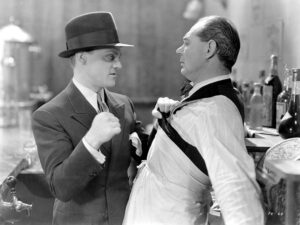
Using several cameras was meant to ensure that the accurate capture of picture and sound happened in one take, since sound recorded on a disc was difficult and expensive. The multiple synchronizer (with picture heads only) was introduced at the beginning of this period. Its original purpose was to keep pictures from the different cameras in sync with each other during editing. Editors then had to craft together scenes from these cameras with no exact sound to match. After the pictures were edited, they were synchronized with the disc. This cumbersome system was eventually replaced by optical recording of sound on film, and multiple-camera shooting became less common.
In 1931, the sound Moviola was introduced and, by 1932, edge numbering of each shot was standard practice. Thus, picture and sound could be spliced at exactly the same point. Cameras often were stationary and editors responded to the challenges of an altered medium. Classic continuity editing became the Hollywood standard, and the entire aesthetic of films changed.
Stories still had to be told, characters developed and humor, drama or adventure conveyed. One solution to the situation was the rise of quick cutting, in which picture coincided with very rapid-fire dialogue. First National Pictures (later absorbed by Warner Bros.) was the studio best known for this, particularly in its gangster films. The Public Enemy (1931, directed by William Wellman and released by Warner Bros.) is a good example. This film does not feel static. It was edited by Edward M. McDermott, whose career, which ranged from 1917 to 1931, was mostly in silents.
His death — the same year that The Public Enemy was released — was marked by an obituary that stated, “McDermott had been employed by The First National for the past two years and was recognized as one of the best film editors in Hollywood. He formerly was employed by the [Los Angeles] Times as a police reporter at the Hollywood station.” It is speculation to link his two careers, but perhaps his work as a word- based newspaper reporter at a busy police station was inspiration for the snappy, realistic form of The Public Enemy.
If more information was available, it might be suggested that The Public Enemy, along with Little Caesar (1931, directed by Mervin LeRoy, edited by Ray Curtiss and also released by Warner Bros.), established the template for the ream of 1930s crime story films. Both were also created under the master designs of producers Darryl F. Zanuck and Jack Warner, but certainly the performances of rising sound-film stars James Cagney, Jean Harlow and Joan Blondell were enhanced by the new editing style.
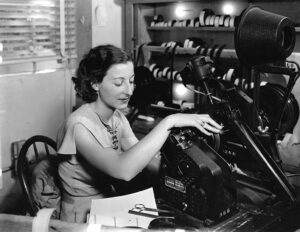
Cutting became more rapid as the decade progressed. As pointed out by Barry Salt in his comprehensive book Film Style and Technology (Starwood, 2003), the average length of shots decreased rapidly in the first half of the 1930s. His detailed research reveals that from 1928 to 1933, the mean average shot length of a sample of 70 American sound features was 11 seconds. Another study of 130 American sound films made from 1934 to 1939 found that the mean shot length was down to nine seconds. Not all films evidenced this trend, but shot brevity obviously became a pronounced editing style. Were any of these films among the best ever edited? Perhaps not, but they did establish a radical new way of telling a story.
Oppositely, director John Stahl, who in the 1930s was a Universal A-picture director, favored long takes that suited his popular “women’s films” melodramas. In the 1930s, he was making movies like the original versions of Back Street (1932) and Imitation of Life (1934), as well as other moneymakers such as Only Yesterday (1933) and Magnificent Obsession (1935). All but Imitation of Life were edited by Milton Carruth, A.C.E., whose 123 editing credits ran from 1929 to 1966. (Interestingly, Carruth also edited the 1959 version of Imitation of Life directed by Douglas Sirk, Stahl’s stylistic heir.)
Their films visually “trapped” their female stars within the frame, just as the characters were confined in their sorrow-drenched lives. (The same use of the long take to wring out melodrama is seen today in films directed by Todd Haynes.) According to Salt’s analysis, Only Yesterday has an average shot length of 14 seconds. Stahl’s mis en scene approach to composition and staging within the frame was in stark contrast to the quick cutting found at Warner Bros.; his method of working with an editor was not always the continuity style. Knowing how to let a shot run is an art form of its own.
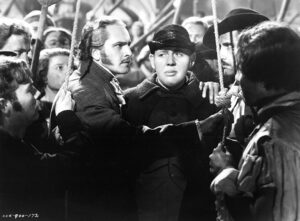
Early in his career, Stahl worked several times with legendary film editor Margaret Booth, who went on to become one of Hollywood’s most noted editors. Another woman film editor who is less well known is the almost equally long- lived Barbara McLean (Booth died at 104, McLean at 92). In Hollywood in the 1920s, McLean began as a negative cutter and, later in the decade, became an assistant editor at United Artists. Impressed with her work, producer Zanuck hired her as an editor for his Twentieth Century Films. There, she cut her first production, The Bowery (1933). He also brought her with him when he merged his studio with Fox Pictures to form 20th Century-Fox in 1935. McLean was one of only eight women film editors working in Hollywood in the 1930s and became chief of Fox’s editing division in 1949.
McLean received four Oscar nominations for editing in the 1930s — Les Misérables (1935), Lloyd’s of London (1936), Alexander’s Ragtime Band (1938) and The Rains Came (1939) — and seven overall during her career, winning only once, for Wilson (1944). (She continued editing major pictures for Fox through the mid-1950s, retiring from the studio in 1969.) McLean held a unique and powerful place in Hollywood for decades. Her Los Angeles Times obituary from April 1996 stated, “As the only woman in the projection room with Zanuck, she had great influence on him concerning costumes, whom [sic] he hired as actors, and many other areas beyond cutting film.”
In the 1930s, McLean’s editing style contributed to the development of the 20th Century-Fox version of classic Hollywood style. Although she worked in a period where, due to other studio demands on directors, the editor often made decisions alone, she was someone who fully subscribed to the invisible theory of editing. In 1977, she told Film Comment, “Film editing is telling the story with film. Good film editing is selecting the best of the film. Great film editing occurs when you begin with great pictures.”
Alternatively, the 1930s editing style that called the most attention to itself was the unique work of Slavko Vorkapich. Born Slavoljub Vorkapić in 1894 in a part of the Austro-Hungarian Empire that is now Serbia, he came to Hollywood virtually penniless in 1921. There, he made a now- famous experimental short, The Life and Death of 9413, a Hollywood Extra (1928), with producer-director-writer Robert Florey. This eventually opened the door to studio jobs, and Vorkapich — or “Vorky,” as he was known — went on to become the creator of many now-classic “montage” sequences for the major studios.
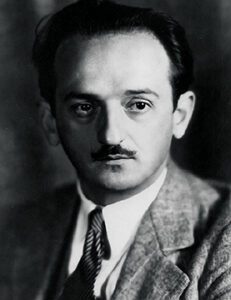
In addition to quick cutting, his work featured optical dissolves and fades of great artistry. Vorkapich worked in post-production from 1932, and was credited with “montage,” “transitional effects” and “special effects” on such films as What Price Hollywood? (1932, the first incarnation of A Star is Born), Viva Villa (1934), David Copperfield (1935), Boys Town (1938) and Mr. Smith Goes to Washington (1939), among others. Perhaps the most famous of his editing work is the (uncredited) earthquake sequence for MGM’s San Francisco (1936) that was meshed with material by special effects department head Jack Basevi, matte paintings by Russell Cully (also uncredited), and contributions by others on the post-production team. San Francisco was edited by Tom Held, and is a fine example of how — at the height of its glory — a big studio had resources to combine traditional continuity editing with special effects that wowed the public.
Montage, in this sense, existed in Hollywood before Vorkapich. Examples of early sound films that used the technique are the 1929 musicals Say It with Songs (edited by Owen Marks) and The Dance of Life (edited by George Nichols, Jr.). In the latter, the hero sinks into dissipation through slow dissolves that show him reveling and drinking heavily as theatre marquees flash diagonally across the screen. The Dance of Life (starring Al Jolson) was a technical risk in other ways; the Paramount release also featured two- strip Technicolor musical sequences, which have now disappeared. In films like these, editors cleverly found ways to replace silent film’s inter-titles.
In the hands of a master like Vorkapich, montage sequences could transcend the ordinary. He was a film theorist as well as an editor, writing in publications as diverse as Film Culture and American Cinematographer. In academia, he was head of the film department at the University of Southern California 1949- 1951. Vorkapich’s theory of film editing was much like that of Sergei Eisenstein. Whereas Eisenstein and fellow Russian filmmakers Lev Kuleshov, Dziga Vertov and Vsevolod Pudovkin had political commentary as well as artistic expression in mind, Vorkapich combined art with entertainment.
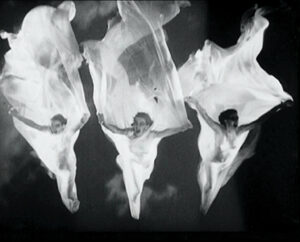
All based their work in very rapid cuts of sometimes contrapuntal, sometimes complementary images. Taken as a whole, this barrage of shots could express emotion, condense action or — as was often the case in Hollywood — mark the passage of time. At their most mundane, montage sequences used pages being torn off a calendar, the whirling hands of clocks, trains rushing in many directions or the flashes of newspaper headlines to collapse time, impart plot information or cover distances.
The use of montage sequences was famously integral to (once again) Citizen Kane. For Kane’s death, the script indicates: “Narrator: Here in Xanadu last week, Xanadu’s landlord was laid to rest, a potent figure of our century, America’s Kubla Khan — Charles Foster Kane.” On screen, a newspaper headline appears with a picture of Kane. The paper disappears and other headlines, set in different type and styles, flash past, announcing his death. The film offers other sparkling montage sequences, including one to explain Susan Alexander Kane’s fall as an opera star. This has been interpreted as a parody of a Vorkapich montage piece that chronicles the rise of opera singer Jeannette McDonald in Maytime (1937, edited by Conrad A. Nervig).
It took the entire decade of the 1930s for Hollywood to perfect the breathtaking editing style that characterized Kane. It was famously edited by Robert Wise, who — with director and star Orson Welles — diligently studied the work of many great editors, both sound and picture. Wise had previously been a sound editor. Their work, and that of thousands of others, rests on the techniques and artistry of the 1930s.
The results of the “75 Best Edited Films” poll may seem to indicate that no film from the 1930s era deserves to be on the list. But in the aggregate, it was that decade’s films that saw the mastery of new technologies and set an editing standard that is still in use today.






